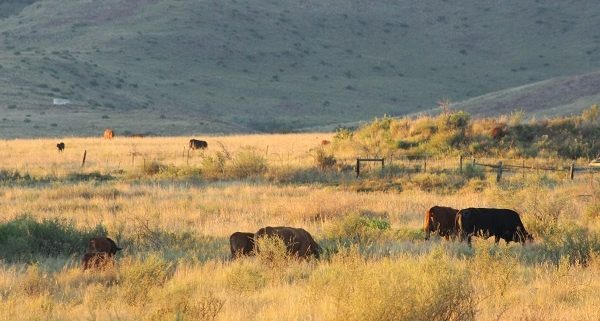Ban on movement of cattle – African Farming
By Liana Mocke
Cattle are now virtually restricted everywhere in South Africa since a national ban on the movement of cattle due to foot-and-mouth disease was introduced on 16 August.
The sudden announcement by the department of agriculture, land affairs and rural development was officially proclaimed on Tuesday. Guidelines have been issued on what the ban entails.
This is how cattle are confined
The three-week ban only applies to cattle, as the movement of these animals has been identified as the main cause of the outbreaks.
In terms of the ban cattle may not be moved between properties, except when the livestock are transported to registered abattoirs and slaughtered immediately.
Cattle may not be transported between farms, areas and sites to be sold. The ban also applies to shows, breeding, rituals, lobola or any other reason.
The animals may also not be transported to feedlots and may only be moved from feedlots if it is directly to a registered abattoir.
Cattle may also not be moved for export or import purposes. The governments of Botswana and Namibia issued statements yesterday to inform their livestock owners about the ban and its impact on animals that would be imported or exported to or from South Africa.
Grace period almost over
A concession was made for cattle that were already at auctions and feedlots when the announcement was made.
If cattle are already at auction pens or showgrounds for which the show or auction was scheduled for 17 or 18 August, these livestock may be moved, but from Friday 19 August no cattle may be moved to or from auctions and shows.
Insecurities and headaches
The sudden announcement is however already causing major headaches and uncertainties for farmers, auctioneers, abattoirs and feedlots.
For example: The department initially said in its statement on the ban that cattle may indeed be moved for ritual purposes. According to the latest indications, this is no longer the case.
According to dr. Michael Swart, state veterinarian in the Western Cape, the national ban creates problems for many farmers, such as dairy farmers, who are also now affected by the ban.
“Dairy farmers who sell their bull calves will not be able to do so at the moment, according to the ban. These farmers will now have to feed the calves until they can be sold and moved.
“Injured cattle that must be emergency-culled will also first need a health certificate from private veterinarians.”
He says farmers who have breeding bulls will also not be able to transport the bulls whilst the ban is in effect.
This is how the disease can still spread
In addition to obvious reasons such as the illegal movement of cattle during the enforcement of the ban, the disease can continue to spread through, for example, saliva in water.
According to Swart, a sick cow’s saliva can end up in troughs and be transmitted to other animals that way.
“The disease can also spread from cattle to game and it is therefore possible that free-ranging buck can get the disease and spread it further.”
Vaccinations
Vaccinations are only given in areas where there are outbreaks, and therefore not preventively in areas free of foot-and-mouth disease.
According to Swart, vaccinations against the virus are part of the control strategy and are only applied in disease control areas, together with restrictions on movement.
“Countries that import our meat will not simply import from areas where vaccinations against foot-and-mouth disease are applied, even if the areas are declared free of the virus.”
According to the department a total of 388 449 vaccinations were recorded.
The vaccination campaign in KwaZulu-Natal began on 15 March and continues in the province’s disease control area where the virus may be in circulation. A risk-based approach is followed with more than 256 000 cattle already vaccinated in the province.
In the Thulamela area in Limpopo animals are vaccinated at dip tanks where there have been positive cases, as part of efforts to build up resistance.
Vaccinations of cattle in affected areas in the North West, Mpumalanga, the Free State and Gauteng have also already started.
Quarantine and roadblocks
If any animal tests positive for foot-and-mouth disease, the entire premises and animals with which the positive animal(s) were in contact are considered positive.
All farms in the North West, the Free State, Gauteng and Mpumalanga affected by outbreaks are under quarantine and strict access control is applied to these affected farms.
The minister also expanded the disease control area in KwaZulu-Natal. The disease control area in Limpopo, which was originally declared in 2019, has also been enlarged. Restrictions on the movement of cloven-hoofed animals, their products and breeding material from, to, through and in these two areas still apply.
Visible patrols by veterinarians and roadblocks are deployed in high-risk areas and where information has been obtained about the possible movement of animals.
The culling of livestock has already took place in certain areas, on farms, at feedlots and auctions, after which the environment was disinfected.




Leave a Reply
Want to join the discussion?Feel free to contribute!